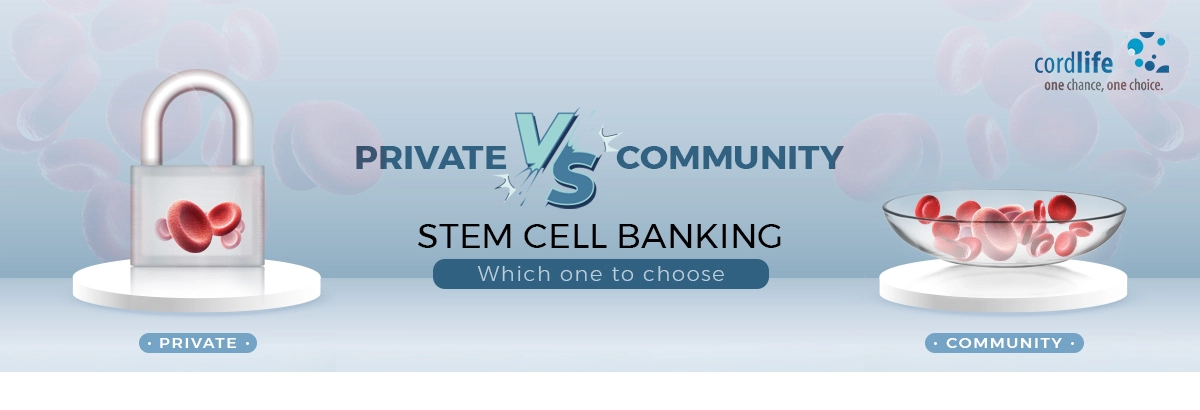The umbilical cord, which creates a bond between the mother and the baby during pregnancy, is clamped and cut right after childbirth to separate the newborn from the mother. Earlier, however, the umbilical cord was cut and treated as a medical waste. With the advancement in science and technology, the untapped potential of the stem cells present in the umbilical cord blood was discovered. As time progressed, the umbilical cord blood stem cells have unleashed a new hope for those who are battling life-threatening diseases like blood cancer, thalassemia, sickle cell anaemia, etc.
Learning about the power of umbilical cord blood stem cells, many parents-to-be like you can make an informed decision about cord blood banking.
Cord Blood banking is essentially the collection and storage of umbilical cord blood.
Having said that, two types of cord blood banks are known worldwide: public and private cord blood banking.
Private Cord Blood Banking
For cord blood banking in a private stem cell bank like Cordlife, all you need to do is pay a nominal cost during the time of cord blood collection (after the child’s birth) as well as for stem cell preservation to keep the stem cells safe for 21 years or more. You can enjoy exclusive ownership and accessibility of the stem cells during this tenure. During this time, your child’s need to use his or her own stem cells may be lower, but whenever there is a need for any medical emergency, either for you or for anybody within your family, the stem cells can be used for stem cell transplantation.
Public Cord Blood Banking
On the other hand, in a public cord blood bank, you are donating your baby’s umbilical cord. The public cord blood banks may not charge you anything for your donation, but they use the cord blood for medical research, as well as for the treatment of anyone who might need the cord blood stem cells based on HLA match.
Besides these two main cord blood banking types, there are reputed cord blood stem cell banks that have introduced something known as mixed, hybrid, or community cord blood banking.
Community Cord Blood Banking
Community cord blood banking neither acts completely like a private cord blood bank nor acts entirely like a public cord blood bank. In a community cord blood banking method, you might have to pay for keeping your baby’s stem cells safe for 2 years, but like a public cord blood banking system, after the completion of those 2 years, the sample goes into a community banking pool, without any prior communication with you. (A public cord blood bank is non-chargeable).
That means you lose the ownership of your baby’s cord blood completely, and you can do absolutely nothing about it even after paying! You will not even be able to retrieve the stem cells for any medical emergency post the two years.
Isn’t this shrugging responsibility?
Need More Information About Cordlife Stem Cell Banking?
Book a FREE Presentation Now
Overall, which stem cell banking method, would you like to go for – private or community cord blood banking method?
